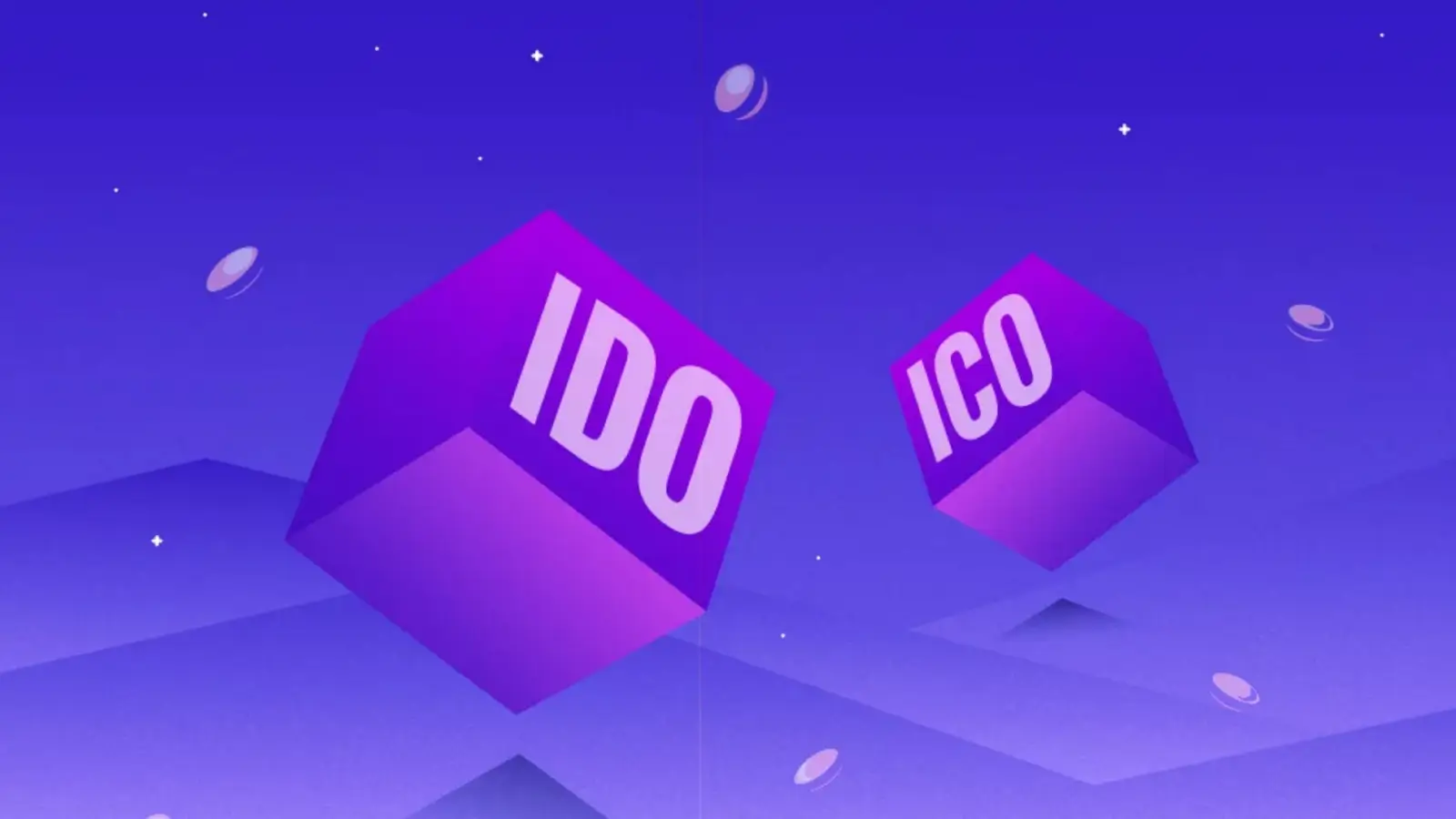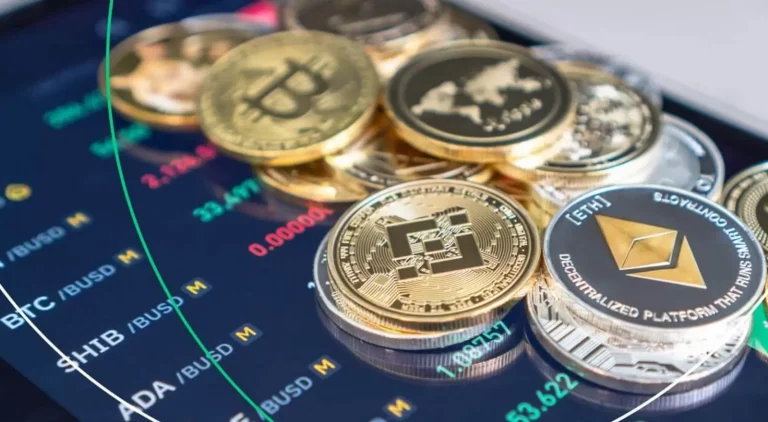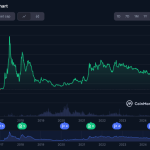The cryptocurrency community has shown remarkable creativity in developing new methods to bootstrap projects and raise funds.
In late 2017 and 2018, the emergence of initial coin offerings (ICOs) allowed teams to raise money by selling a portion of their total token supply to the public, creating a wave of excitement as these new coins often multiplied in value once traded on exchanges.
Quick Navigation:
ICOs primarily utilized Ethereum’s ERC-20 protocol, becoming a leading use case for ETH-based tokens. The initial ICOs in 2016 raised modest amounts, but by the following year, sums averaged between $20 and $30 million, with projects like Bancor raising over $150 million.
The intense hype led some projects to secure enormous funds, with EOS being a notable example, raising over $4 billion during its extensive token sale.
As often happens with sudden hype, the ICO bubble burst in 2018, but by the first quarter of 2019, initial exchange offerings (IEOs) emerged, introducing new dynamics.
Initially led by Binance Launchpad, IEOs adopted the crowdfunding model of ICOs but with more rigorous vetting. Launched on major exchanges like Binance, KuCoin, Huobi, and OKEx, these projects underwent extensive due diligence, resulting in fewer IEOs compared to ICOs and ensuring a higher entry barrier. Besides fundraising, IEOs also benefited from being listed on the exchange managing their token sale, addressing a significant concern for ICO investors in 2018 regarding token listing.
Several well-known projects, now multi-million or multi-billion dollar enterprises, began as IEOs, including Elrond, Matic Network (now Polygon), Celer Network, WazirX, and others.
As listing concerns grew alongside the popularity of decentralized exchanges like Uniswap (Ethereum) and PancakeSwap (BNB Chain), the ability to list new tokens and provide liquidity increased. It was only a matter of time before token sales capitalized on this trend.
By 2021, initial DEX offerings (IDOs) gained prominence, and it’s essential to understand what they entail and how they operate.
What is an Initial DEX Offering or IDO?
The concept of initial DEX offerings has evolved significantly over time, and in its current form, it differs from its original intention during the first IDO.
Essentially, an initial DEX offering aims to raise funds and bootstrap a project, succeeding ICOs and IEOs. Unlike ICOs and IEOs, where tokens are sold before listing, IDOs immediately list on a decentralized exchange (DEX), hence the name.
The first IDO took place in June 2019 with the Raven Protocol on Binance’s decentralized exchange. Tokens were offered at a fixed price until the hard cap was reached, marking the beginning of IDOs on various platforms.
This fundraising method offered potential benefits, including:
-
- Fast trading
-
- Immediate liquidity
-
- Open and fair fundraising
However, investors faced challenges as tokens were quickly bought up, leaving little opportunity for average investors. Concerns arose about tokens being acquired by bots and insiders, leading the industry to adapt to meet growing demand.
This adaptation resulted in the creation of IDO launchpad platforms, becoming a hot topic in late 2020 and 2021.
IDOs in Their Most Popular Form: How They Differ From IEOs?
In their current form, initial DEX offerings closely resemble initial exchange offerings (IEOs) with key differences.
In an IEO, the exchange vets the project and conducts the token sale. In an IDO, a third-party platform vets the project, while the token sale itself is conducted in a decentralized manner.
In theory, anyone can raise funds through an IDO using a third-party launchpad platform by opening a pool.
The process involves a project approaching a launchpad, meeting its requirements, and being selected for an IDO. While specifics vary between launchpads, the core concept remains consistent.
Users purchase “IOUs” of the token the project plans to launch. An IOU acknowledges debt, meaning investors pay for tokens in advance and receive them upon the Token Generation Event (TGE), typically occurring shortly after the IDO.
Once the IDO concludes and the TGE occurs, the token is immediately listed for trading on a decentralized exchange, often Uniswap, as most projects are based on Ethereum’s ERC20 protocol.
Other blockchains like Solana, Avalanche, Polkadot, Arbitrum, and Optimism are gaining popularity. Some projects prefer launching tokens on non-Ethereum networks to avoid high fees, among other reasons.
Very Low Initial Market Cap: Is This The IDO Secret Sauce?
Unlike ICOs, especially during their peak in 2017-2018, IDOs typically have a low market cap at public listing. Often just a few million or less than a million due to vesting periods for most token holders, except those participating in the IDO process.
The IDO process itself generally raises the smallest amount. Each participant can win an allocation of a few hundred dollars, and the total sum raised is rarely more than $500K.
Why is this beneficial? Consider these points:
-
- High demand during price discovery can propel good projects to 10x their value upon market entry, with some achieving an additional 10x, providing 100x returns for IDO participants. Even after a 100x, a project starting with a $3 million market cap would reach $300 million, a reasonable valuation.
-
- This approach addresses ICO/IEO issues where investors rush to sell for profit, potentially causing a price dump and snowball effect.
-
- Fundraising amounts can still be substantial (a few million dollars or more), but initial circulating supply is crucial for returns.
Win-Win: Investors Enjoy Huge ROIs While Project Gets Excessive Marketing
A typical aspect of nearly every initial DEX offering is the whitelisting process. Due to high demand for token sales, launchpad platforms limit participant numbers and provide small allocation sizes, usually a few hundred dollars.
Most IDOs undergo an extensive whitelisting process to narrow participants to a supported maximum.
To qualify for whitelisting, users must complete marketing tasks, such as:
-
- Joining the project’s Telegram chat
-
- Retweeting and commenting on project tweets
-
- Liking the project’s social media platforms, etc.
This generates a marketing surge for the IDO, rapidly growing these communities. It’s common for a future IDO project to gain over 100,000 Twitter followers and similarly sized Telegram groups in days.
Another criterion is holding a certain amount of tokens native to the launchpad platform.
Typically, there are two whitelisting rounds: one for native token holders and another for the broader public. The second round is highly competitive, with low participation odds, prompting some platforms to offer guaranteed allocations.
The two factors create a significant marketing effect, generating demand for the IDO token on the secondary market, often lacking in earlier ICOs and IEOs.
Guaranteed IDO Allocations: What Are They?
For allocation in an upcoming IDO, most platforms require users to hold native tokens to increase participation odds.
Some platforms now offer guaranteed allocation based on the number of native tokens held, avoiding lotteries.
For example, if an IDO aims to raise $100,000 with 1,000 qualifying participants, each would receive $100.
However, to incentivize larger holders, launchpad platforms have created tiers where higher token holdings result in larger allocations, significantly increasing the value of many IDO launchpad tokens.
Pros and Cons of IDOs
Like any model, initial DEX offerings have advantages and disadvantages. Let’s examine them closely.
Advantages
-
- Many projects can raise money.
By eliminating rigorous IEO vetting, many projects access crowd-sourced capital, theoretically benefiting the wider industry. However, this can also be a disadvantage—read below.
-
- Flexibility
Investors don’t have to wait long for tokens to list on an exchange. Listing typically occurs immediately post-IDO, offering flexibility to cash in on investments quicker than ICOs.
-
- Instant and High Liquidity
It’s common for projects to lock a significant portion of crowd-sourced funds as liquidity on the DEX where their token trades. Additionally, many projects immediately offer staking programs to encourage holding.
-
- Transparency
With on-chain operations, traceability is ensured, allowing everyone to verify token contracts in advance (if public).
Disadvantages
-
- Obscure Vetting Process: Ground for scams
The high demand for IDOs allows scam artists to quickly bootstrap obscure projects.
-
- Expensive Participation Criteria
While most platforms offer a public round, the odds of winning an allocation are low due to high competition. Users often need to hold many launchpad tokens for a substantial investment and return.
-
- Unproportional bag holding between seed, private, and public investors
Most IDOs reserve the majority of tokens for the team and seed/private round investors. Vesting over time prevents price discovery dumps, but once vesting schedules are met, profit-taking often occurs. Pro tip: by tracking smart contracts, investors can see when such events happen (usually weekly, monthly, or quarterly).
How to Invest in an IDO?
Participating in an IDO varies by launchpad but generally follows these steps:
Step #1: Perform KYC/AML
Most IDOs require investors to undergo KYC/AML screening before participation due to stringent cryptocurrency regulations. This screening often excludes US citizens.
Step #2 (Optional): Hold Launchpad Tokens
Many launchpad platforms require potential investors to hold a certain number of their tokens or provide liquidity to qualify for an allocation.
Sometimes, this increases the chances of winning an allocation.
Step #3 The Whitelisting Process
As mentioned, users must complete various tasks to qualify for an allocation, such as following specific pages on Twitter, retweeting certain posts, and joining specific Telegram groups.
Step #4 Have a Web 3.0 Wallet Ready
To participate in an IDO, users need a web 3.0 wallet to interact with the launchpad platform for investment and token receipt.
MetaMask is a popular and reputable wallet option.
Step #5 Learn How to Use Uniswap and Other DEXes
Upon receiving an allocation and tokens in your wallet, you’ll want to trade them eventually.
Familiarize yourself with using Uniswap and other decentralized exchanges to access immediate listings. Many share similar interfaces to Uniswap, making this guide a great starting point.










